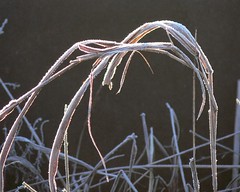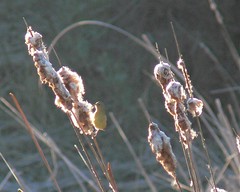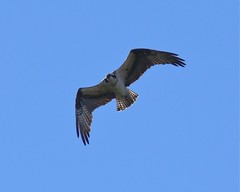 Saturday morning I spent about 3.5 hours birding Lake Creek Trail starting at the Parmer Village drainage pond. It was a clear beautiful morning, with the temperature in the mid 20s when I started at about 7:45. The grass was covered in frost. I spent about an hour in the marshy area by the Parmer Lane bridge since I hadn't birded that area in awhile and I was curious to see if any of the marsh birds I've found there in past winters had returned. Unfortunately the flood from tropical storm Hermine on 9/7/2010 killed most of the cattails in this area. (That night the water was probably 6 feet deep through this area at least!) So the only marsh birds I was able to find were a Swamp Sparrow, a Common Yellowthroat, and 2 Wilson's Snipes. Hopefully the habitat will recover for next winter.
Saturday morning I spent about 3.5 hours birding Lake Creek Trail starting at the Parmer Village drainage pond. It was a clear beautiful morning, with the temperature in the mid 20s when I started at about 7:45. The grass was covered in frost. I spent about an hour in the marshy area by the Parmer Lane bridge since I hadn't birded that area in awhile and I was curious to see if any of the marsh birds I've found there in past winters had returned. Unfortunately the flood from tropical storm Hermine on 9/7/2010 killed most of the cattails in this area. (That night the water was probably 6 feet deep through this area at least!) So the only marsh birds I was able to find were a Swamp Sparrow, a Common Yellowthroat, and 2 Wilson's Snipes. Hopefully the habitat will recover for next winter.A few other birds I found in the remnants of the cattails were a singing Winter Wren, a Ruby-crowned Kinglet, and an Orange-crowned Warbler. The kinglet and warbler were together, pulling seeds out of the cattails. I don't know if they were eating the seeds themselves or foraging for bugs. Here's a photo I got of the Orange-crowned Warbler.
Upstream by the last dam I played an Eastern Screech-Owl recording by a patch of dense woods. I was pleased to see a Brown Thrasher briefly pop up, soon to be chased away by a Northern Mockingbird. Brown Thrashers are winter residents in central Texas but are often hard to observe due to their inconspicuous habits and preference for dense brush.
A rather conspicuous bird was an Osprey that I found hunting over the creek. These dramatic large black and white hawks hunt fish and are mostly in the Austin area only during the winter. I got this photo as it wheeled overhead.
It was a good day for finding hawks. I also saw a Red-tailed Hawk, a Red-shouldered Hawk, a Cooper's Hawk, and a Sharp-shinned Hawk. Cooper's and Sharp-shinned Hawks are in the Accipiter family that preys on other birds. Accipiters don't usually hunt their prey out in the open. They hunt and chase their prey through the dense tree canopy. So they have relatively long tails and short rounded wings to give them amazing maneuverability at high speeds. On my way back an accipiter (I couldn't tell which) flew right in front of me across the trail and into the woods after a Northern Cardinal. I could hear its feathers cutting through the air as it passed. And I couldn't believe how fast it darted and turned through the branches. It took my breath away!



No comments:
Post a Comment